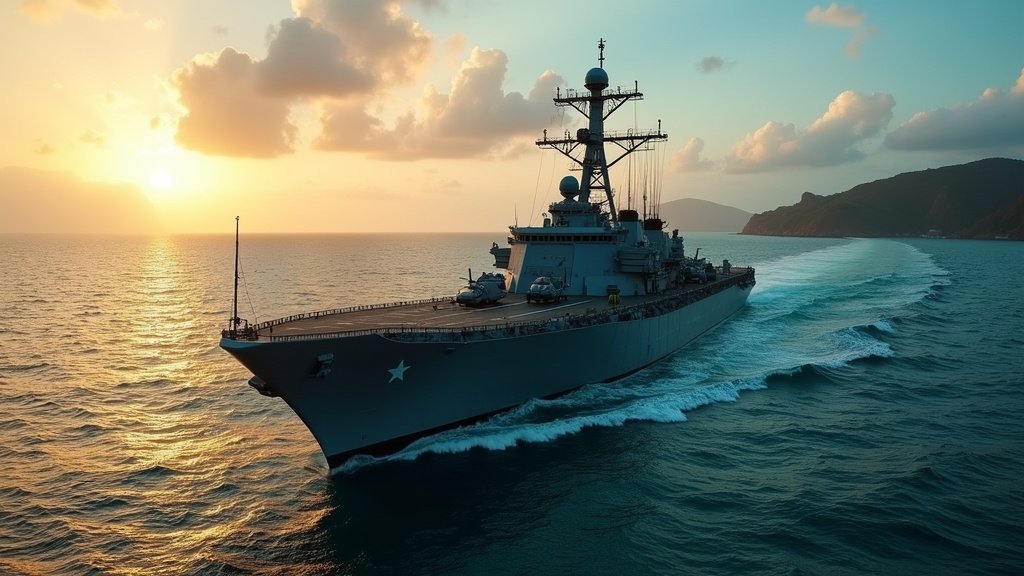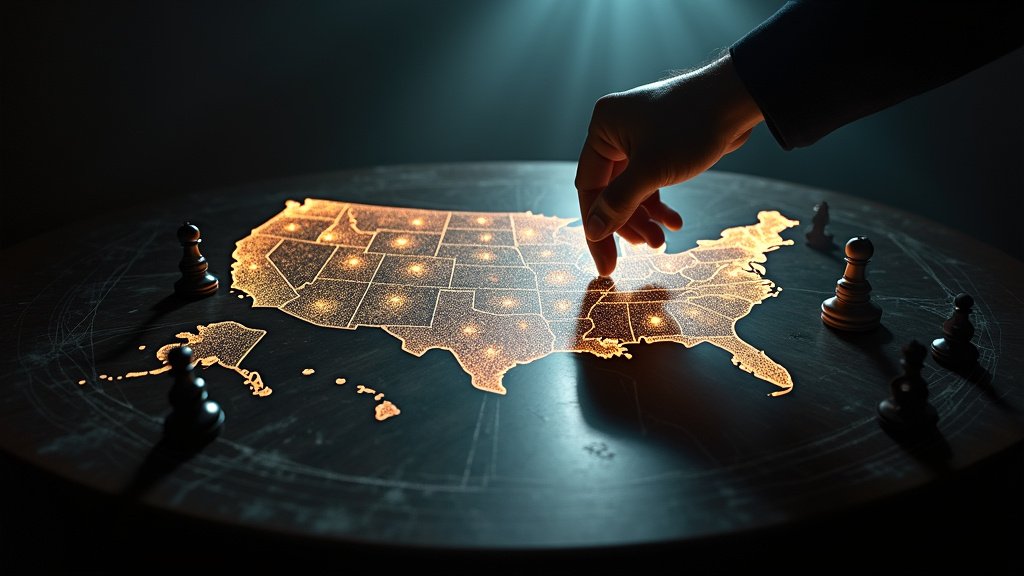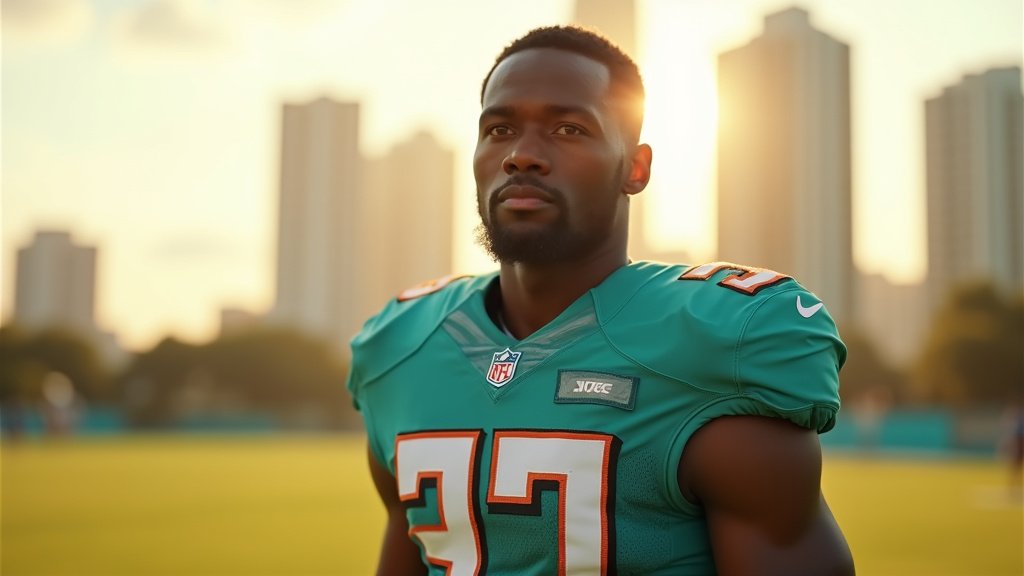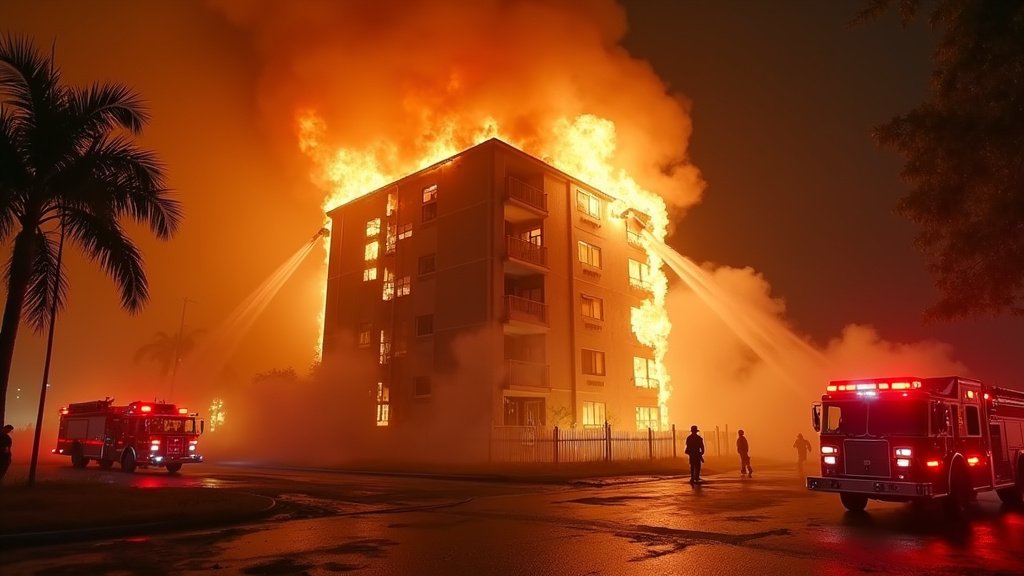The recent deployment of a substantial U.S. naval and air contingent to the southern Caribbean has rekindled acute memories of past U.S. military interventions in Latin America, most notably the 1989 invasion of Panama. While Washington frames the operation as a critical offensive against transnational drug cartels and associated criminal networks, the scale and rhetoric surrounding this maneuver evoke a complex history of U.S. involvement in its southern neighborhood, raising questions about its true objectives and potential regional implications. [8, 12, 13, 19]
The Latest Deployment: A Multi-faceted Offensive
In mid-August 2025, the United States escalated its military presence in the Caribbean, dispatching a formidable array of assets under the direction of the Trump administration and U.S. Southern Command (SOUTHCOM). This includes the Iwo Jima Amphibious Ready Group (ARG), the 22nd Marine Expeditionary Unit (MEU) with approximately 4,500 service members—comprising 2,200 Marines—aboard ships such as the USS Iwo Jima, USS San Antonio, and USS Fort Lauderdale. Additionally, guided-missile destroyers (USS Gravely, USS John Dunham, USS Sampson), a nuclear-powered attack submarine, a guided-missile cruiser, and long-range surveillance aircraft are part of this enhanced deployment. [8, 12, 13, 14, 16, 18, 20, 21, 26]
The official rationale for this significant military buildup is to disrupt drug trafficking networks and combat “narco-terrorist organizations” which have been explicitly designated by the U.S. government. [8, 12, 13, 15, 19] Secretary of State Marco Rubio has been at the forefront of this initiative, directly linking the Venezuelan government of Nicolás Maduro to illicit trafficking and labeling it a “criminal organization.” [8, 13, 15] This narrative is further underscored by the U.S. doubling the bounty for Maduro’s capture to an unprecedented $50 million. [14, 18, 23]
Washington asserts that these operations are crucial for U.S. national security, aiming to stem the flow of illegal drugs into the country and secure its southern border. [8, 19] The mission, which combines advanced naval and air assets with extensive counternarcotics experience, seeks to enhance maritime security, deter illicit activities, and reinforce partnerships with regional allies like Guyana, whose Vice President has described the U.S. presence as “complementary” to their own efforts. [8]
Echoes of Operation Just Cause: Panama 1989
The current deployment has drawn immediate comparisons to “Operation Just Cause,” the U.S. invasion of Panama in December 1989. [13, 18] That intervention, involving over 27,000 U.S. troops, aimed to depose General Manuel Noriega, the dictatorial de facto ruler of Panama, who was wanted in the U.S. on drug trafficking and money laundering charges. [7, 9, 11, 16, 22] Other stated objectives included protecting American lives and property, securing the vital Panama Canal, and restoring democracy. [7, 9, 11, 16, 22]
Similarities between the two situations are striking. Both involve substantial military force directed against a Latin American leader accused of drug-related crimes. Noriega, like Maduro is now, was a figure Washington sought to remove, citing national security concerns and a threat to democratic principles. [7, 11, 16] The rhetoric employed by U.S. officials today, particularly the emphasis on “narco-terrorism” and the criminalization of a state actor, resonates with the justifications presented for the Panama invasion. [8, 13, 15, 16]
However, there are also notable differences. In 1989, the U.S. cited specific attacks on its troops and Noriega’s declaration of a “state of war” as direct provocations for intervention. [11, 22] While current U.S. officials accuse Venezuela of supporting drug cartels, a direct armed confrontation or invasion on the scale of Panama is considered unlikely by some analysts, who view the current deployment as a “show of force” or a deterrent signal. [15, 18, 24, 26] Nevertheless, the deployment of amphibious units capable of rapid deployment or limited strikes underscores the range of options available. [8]
A Region Wary of Intervention
The history of U.S. military interventions in Latin America is long and complex, stretching back to the 19th century with nearly 400 documented operations between 1776 and 2023. [3] Driven by economic interests, protection of citizens, territorial expansion, and later Cold War ideologies, these interventions often led to regime change, nation-building efforts, and the backing of dictators. [3, 4, 5, 6] The Monroe Doctrine and its subsequent Roosevelt Corollary laid the groundwork for a unilateral U.S. foreign policy in the hemisphere, asserting its dominance and “responsibility to preserve order.” [3, 24]
This extensive history has fostered deep-seated suspicion and resentment in many Latin American nations towards U.S. military presence. The 1989 invasion of Panama, for instance, was widely condemned by the United Nations General Assembly and the Organization of American States as a “flagrant violation of international law” and an “unwarranted yanqui intervention.” [7, 9, 11, 16]
Today, the reactions to the Caribbean deployment reflect this historical context. Venezuelan President Nicolás Maduro swiftly denounced the U.S. action as a “threat to the region’s peace” and a “flagrant violation of international law,” ordering the mobilization of 4.5 million militia members in response. [13, 14, 18, 21, 23] Several other Latin American governments, including Cuba and Nicaragua, have echoed this condemnation, dismissing the drug interdiction claims as an “opportunistic pretext.” [13, 17, 23]
However, not all reactions are uniform. Venezuelans living in Trinidad, for example, have expressed a degree of optimism, hoping that the U.S. presence might pave the way for Maduro’s removal and new elections. [21] This highlights the internal divisions within Venezuela and the complex aspirations of its populace.
The Path Forward
The current U.S. military deployment in the Caribbean, while framed as a counternarcotics effort, inevitably carries significant geopolitical weight due to the region’s history and the explicit targeting of the Venezuelan government. The parallels to the Panama invasion of 1989 serve as a potent reminder of the potential for escalation and the deeply ingrained sensitivities surrounding U.S. military actions in Latin America.
As U.S. forces operate in international waters along the Colombian and Venezuelan coastlines, their mission is not merely to intercept illicit shipments but also to project strategic influence and deter what Washington perceives as hostile state actors. [8, 18] The ongoing situation underscores the delicate balance between combating transnational crime and respecting national sovereignty, a challenge that continues to define the intricate relationship between the United States and its Latin American neighbors. The region watches closely, weighing the stated intentions against the historical precedent of intervention.





